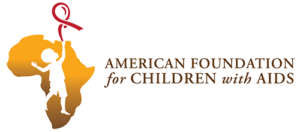Around the turn of the century, a wave of activism combined with the generic production of AIDS-combating drugs significantly lowered the price of first-line treatment for HIV. Now, because the price of a standard antiretroviral (ARV) regimen hovers around $160 per person per year, the majority of AIDS victims around the world have access to this baseline version of ARV. This is an amazing reduction from the $10,000-15,000 range of the late 1990s. However, even the lowered price is prohibitively expensive for many developing countries, and unfortunately, international trade law still prevents a straightforward price reduction of ALL types of ARV.
Second-line ARV drugs, developed after the less sophisticated first-line medications, have less potential for toxic side-effects and will defeat strains of HIV that have become immune to baseline ARV. Though they are less critical than first-line ARV, they are needed in the fight against AIDS for those victims for whom first-line treatment won’t work. The WTO’s 1994 Agreement on Trade-Related Aspects of International Property Rights (TRIPS) granted protection to all antiretroviral medications for twenty years after they are patented. The first-line medications’ protections have already expired, and even before they had, foreign companies and governments had broken the rules of TRIPS and produced generic first-line ARV.
The better performing, second-line drugs don’t have the same protection, causing a great disparity between the price of baseline and second-line ARV. The days of $10,000-yr ARV are over, but because under TRIPS patents still protect the later medications, a second-line regimen costs $550 per year in low-income countries. The price is only this low because the international wave of advocacy which accompanied the production of generic first-line medication in the early 2000s induced the major pharmaceutical giants to operate with a tiered price system—that is, it offers prices to countries on the basis of per capita income. Drugs are cheaper in poor countries than in rich countries, but not cheap enough to be affordable. Considering that a billion people around the world earn less than a dollar a day, and that HIV is concentrated among these people, pricing drugs at $550 is little different from a death sentence for thousands of HIV+ poor people for whom first-line ARV doesn’t work. Considering also that middle-income countries with vast income inequality, such as India, China, and most importantly South Africa, must pay an even higher price, the poor in those countries are even less able to receive second-line treatment.
Governments can legally issue compulsory licenses domestically for generic drug production, so that a limited number of non-brand second-line ARV can be produced, but doing so comes with severe diplomatic consequences, usually from the United States. In 2007, Thailand allowed the generic production of pharmaceutical giant Abbott’s brand medicine Kaletra, a second-line ARV drug. The US retaliated by placing Thailand on the “priority watch list” for trade, and Abbott removed seven other very valuable ARV products from Thailand. This was detrimental to Thailand’s national health and economy, but the country’s bravery did lower the price of this particular type of second-line ARV for the rest of the world.
Much more international advocacy is needed to give all variations of ARV a just price. All people deserve proper treatment for their medical conditions. For more details about the history of antiretroviral drugs, read the a fuller account at http://www.avert.org/generic.htm. And find out more about how you can help on the AFCA website!

